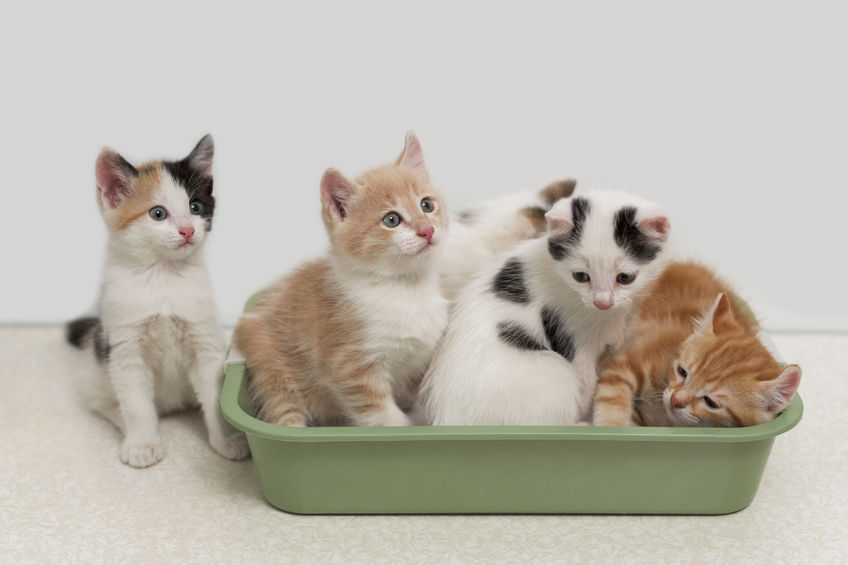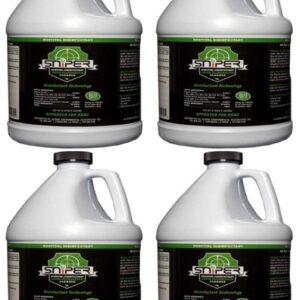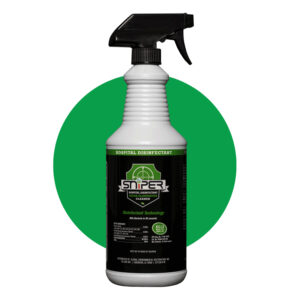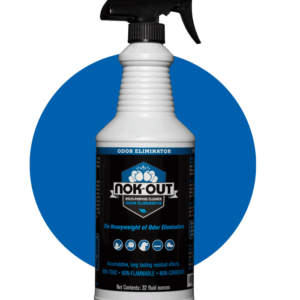Few things on this planet smell as bad as cat pee odor. It’s bad enough just putting up with that ammonia smell when cleaning the litter box, but when Kitty misses the box, has an accident (Awww, pore old kitty!), or reacts badly to your extended absence by spraying the walls, it is a whole different story. This is NOT something that you can just learn to live with. That cat pee odor is the worst and getting rid of that odor can be quite the challenge. When enzyme-based products have failed you, Nok-Out will remove cat pee odor permanently.
When a cat first pees, it is mildly acidic, but within an hour or so, bacteria begin to break down the urea, releasing ammonia. After a few hours, it may have a pH of around 11-12. Ammonia produced from cat pee will leach the blue and red dyes right out of the fibers comprising your carpet. The result you see may appear to be a yellowish stain. In truth, however, the other colors are now gone and that yellowish color is all that is left. No stain remover in the world can restore lost dyes to those fibers. So it is important that you try to get all of that out of your carpet asap! If your cat has left you little puddle, blot up as much of that as you can, as soon as you can, to prevent this chemical change from ruining your carpet.
Marking vs Peeing
Cats squat to pee. But when they are marking territory, they usually back up to a wall or fence and eject their pee sideways onto the fence or wall, and their tail will twitch in an unusual manner. This is typical of marking or spraying behavior. If it occurs outside on your fence, it is often not really noticeable to humans. But inside your home – OMG! This can cause you a real pain in the nose! Go to your local hardware store and get yourself a little UV flashlight (blacklight). Cat pee is a strong source of phosphorus and will light up like a little neon sign under a blacklight. Urine glows a pale green. (You may also see a purple glow – this is usually some kind of detergent.) Go around in the evening with the lights out or low and examine the walls for telltale signs of this marking behavior. Take your Nok-Out with you and spray the areas affected carefully as you find them. Spray Nok-Out, give it a quick wipe, spray one more time and walk away allowing it to air dry. Cat pee on the walls may drip down and go between the baseboards and the wall. Spray there too!
Removing Cat Pee Odor from Hard Surfaces
Older cats and younger cats may have accidents near the litterbox. You can simply wipe up the puddle and spray directly on that area – and then walk away, allow it to air dry for maximum effect. Hard surfaces are easy! It’s the soft ones such as carpet and upholstered furniture that are more difficult, because it can be difficult to get at all of the source.
Removing Cat Pee Odor from Carpet
The number one rule for getting Nok-Out to work well is direct contact with the source of the odor. As an oxidizer, Nok-Out is literally unable to do what it does without that direct contact. If you are lucky enough to find a small, fresh puddle that has not yet sunk through the fibers to the floor under your carpet, get an old towel and carefully blot as much as you can. Try to absorb it into the towel rather than pushing the cat pee deeper into your carpet. Spray the area with Nok-Out and use your fingers to try and work it down into the fibers a bit; again, you are trying to get Nok-Out to go to the same places the cat pee went, in order to make contact with all of the cat pee.If you are dealing with a situation in which cats have peed repeatedly on the carpet in some room, use that black light to try and determine the extent of the damage. Maybe it can be cleaned away using a rental carpet cleaner by following these instructions. If it is really bad, however, it may be smartest to simply replace the carpet in that room.
You can treat the hard surfaces – floor and walls – easily, with Nok-Out. Replacing the source of so much grief is often easier than trying to salvage something that has been abused badly. Nok-Out is non-toxic and can be used safely in your home. It is non-corrosive and requires no special handling or equipment to use. Give Ted a call at 866 551 1927 with any questions. Buy some Nok-Out today and breathe easier!






Does this work for dog pee also?
Love your products and frequent articles.
Hi Bonnie – Yes indeed, to a certain extent, pee is pee, whether human, dog cat or hamster. Nok-Out or SNiPER can remove the odor from any of them. Thank you for your kind words!
What’s the standard ratio I can use for dilution when cleaning cat pee from hardwood or tile floors? And can I use the same ratio for carpets? Thanks
For hardwood or tile – use full strength. For carpet, you can dilute up to 5 to 1 (water to Nok-Out). The idea is that if you start spraying a carpet, most of the little droplets coming out of the sprayer, will just float on the surface of all those fibers and not come into contact with the urine, which has likely been pulled down by gravity. For Nok-Out to be able to work, it must come into direct contact with the odor source. So when you dilute a lot, then you can spray down a lot of fluid that will obey the laws of gravity and sink to the bottom of the carpet and hopefully come into contact with the urine down there also. After spraying heavily onto your carpet, be sure and go back 20 minutes later and blot up as much excess liquid as possible using old towels. Put a fan on the area to speed drying.
One of my 5 rescue cats has always had “accidents” but the older he gets the more he pees (or sprays?) He has particular ‘hot spots’ against walls and doors that he returns to over and over. I like what I’m reading about Nok-Out but am concerned about the instruction to spray then leave to dry. We have tongue and groove hardwood flooring throughout. (Yes, the pee drips down the cracks!) Won’t leaving a wet patch of Nok-Out to evaporate damage the floor as much as the pee does? (Though of course it will smell better)
Hi Mrs Atkinson,
Good point. You may well be right that Nok-Out – which is 99.6% water – may well cause water damage if applied to wood. The answer is to spray that wood and allow it to stay wet for only a few minutes, then wipe it dry. You will likely have to repeat this process, but it won’t cause water damage to wood.
My cat vomited on a thick shaggy sheepskin rug. Or it might even have been poop. Not sure but there were hairballs in it and it stunk horribly. I wiped as much as I could off and saturated the area with full strength Nok-Out that soaked through to the bottom of the carpet. It’s going to take a long time to dry. For Nok-Out to work on carpet, does the carpet have to dry fully? I’d like to wash it ASAP as I want it to dry ASAP so I can use it again. Any advice? thanks.
Hi Hugo,
I think it is best to allow it to dry fully. If you are in a big hurry, go ahead and wash it, but you may need to treat it again with Nokout if the odor persists.
What about poop?
My little stinker will pee in the box, but poops everywhere else. I found an enzyme cleaner that does wonders for the stains, and the general smell (to my dumb human nose) but I wonder if it’s doing the job for my cat.
He tends to return to the scene of the crime (could be scent, could be location). If the former, I’d like to do everything I can to make that less appealing.
Hi Beth, Thanks for writing. Tricky question here – does the cat return to the same place to poop because of the memory of having done it here before, or does the cat recognize by smell that, “Oh, this is the place to poop”. Tough question to which I have no answer for you – it may be a bit of both. To the extent that this behavior is odor oriented, Nokout will certainly remove any odor from the “pooped-upon area”. Clean up the mess and spray the area with Nokout. Walk away allowing it to dry normally and this will remove the odor. You may want to try picking up the poop and putting it into the litter box. Perhaps the cat will start to associate the litter box with the odor of poop and start going there.
Do we have to dilute the Nok-Off with water if we have carpet or can we just pour it on there as is?
Hi Sabrina, You do not have to dilute when treating carpet, but carpet has a LOT of surface area due to all the fibers. Diluting gives you more liquid to work with, which means that you will have a better chance of getting Nokout to come into direct contact with ALL of the stinky stuff.
I hope this helps!